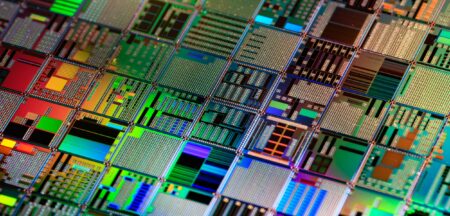 The trade war between the US and China threatens to split the global internet in two, drawing distinct lines between East and West.
The trade war between the US and China threatens to split the global internet in two, drawing distinct lines between East and West.
The “splinternet”, as this phenomenon has been named, is already observable at the application layer, where governments including China’s Communist Party exercise varying levels of control over the content and apps their citizens can (and cannot) use.
Not long ago, differences in language played a role in splitting the internet. More recently, the threat of a splintered internet is to be found in deeper layers of the world’s largest network, within the core of the infrastructure itself.
The US and EU have responded to competitive pressures by Chinese infrastructure players like Huawei by resorting to sanctions. For developing countries, however, the budget-friendly pricing offered by Chinese companies is often too attractive to worry about anxiety-fuelled political scrambling to temper the rise of a new dominant power in world trade – despite allegations that Huawei places backdoors and spyware into its kit, something the Chinese manufacturer has always strenuously denied.
As the world moves towards 6G later this decade, differences in hardware standards may lead to similar bifurcation. This means that the East and West might eventually have different 6G standards, forcing device manufacturers such as Apple and Samsung to release different devices depending on whether telecoms operators source their networking equipment from Chinese or European companies.
OpenRAN
“The majority of our core network is European by history and by design,” said MTN Group CEO Ralph Mupita at a recent engagement with journalists.
“On the radio side, however, 85% of the world uses Huawei. OpenRAN has not been proven as a ubiquitous technology. Our position on this issue is we are adopting best practice on both markets; we are not aligning ourselves, we are just choosing components that best fit our network.”
The OpenRAN approach attempts to build radio-access networks – the part of the network connecting your phone to the nearest tower – in a way that makes it easier to plug in and interchange components from various suppliers.
Read: Huawei sets up Apple showdown
Mobile operators around the world, including Vodacom Group and MTN Group in Africa, are experimenting with OpenRAN network architectures in an effort to reduce their reliance on any one vendor, but the concept is still in its infancy.
As things stand, a deepening of trade tensions between East and West could end up forcing network operators to choose whether they source their technology from one side or the other. The device ecosystem will have to follow suit, and so, too, will the apps on those devices. This could raise costs, which will be passed on to end users.

An additional split in internet standards is likely to force vendors to opt to specialise in specific markets instead of trying to maintain a global presence.
But Paul Colmer, regulatory specialist at South Africa’s Wireless Access Providers’ Association, believes it is unlikely that China will initiate a move to its own hardware and communications standards as it is not in its economic interest to do so. As the world’s manufacturing hub, it is in China’s interest to work with international standards bodies like the 3rd Generation Partnership Project because this will help its manufacturers maintain their competitive edge by preserving economies of scale.
That does not mean the US might not be the first mover in initiating a split in standards. The US is adopting a more protectionist approach in its trade war against China – but some of its moves are perhaps not as beneficial to its objectives as they may first seem.
Import tariffs of 100% on Chinese electric vehicles and their components by the US – a move that the EU promptly mimicked – is likely to slow the electrifications of vehicle fleets on both continents. US car manufacturers are also reliant on Chinese companies for battery technology, which is cheaper and more advanced in China.
Similar ructions are brewing in semiconductors, where the US has banned exports of advanced US-made chips and high-end chip-making equipment to China. One of the unintended consequences of such bans, however, is the immediate development of a black market in these goods. It will also likely force China to develop these technologies itself, so that it becomes self-sufficient. In the long term, that’s not good for the US.
America is trying to reinvigorate its own chip-making industry through government grants to companies like Intel. The workability of this is questionable. Intel, once the giant of the chip industry, is in deep trouble. Last week, US Republican senator Rick Scott questioned Intel’s plan to cut 15 000 jobs despite being awarded US$20-billion by the US government to invest in new factories.
Globalisation
Users of Huawei phones are already feeling the effects of a bifurcated technology landscape. Ever since the US-led sanctions came into force under former President Donald Trump, Huawei users have been forced to “sideload” apps to get them to work on their devices, posing security risks.
Although inconvenient (and a little unsafe), in a truly bifurcated world such options might not even exist, meaning users will not have the privilege of accessing the latest technologies at the best price from the manufacturer they prefer.
Globalisation has been the force powering the world economy since the late 19th century, and it cannot be easily reversed. But that doesn’t mean it can’t happen. And that would be bad news for everyone, including China and the US – and everyone else, for that matter. – © 2024 NewsCentral Media
Don’t miss:
How South Africa’s internet exchanges are boosting African connectivity




